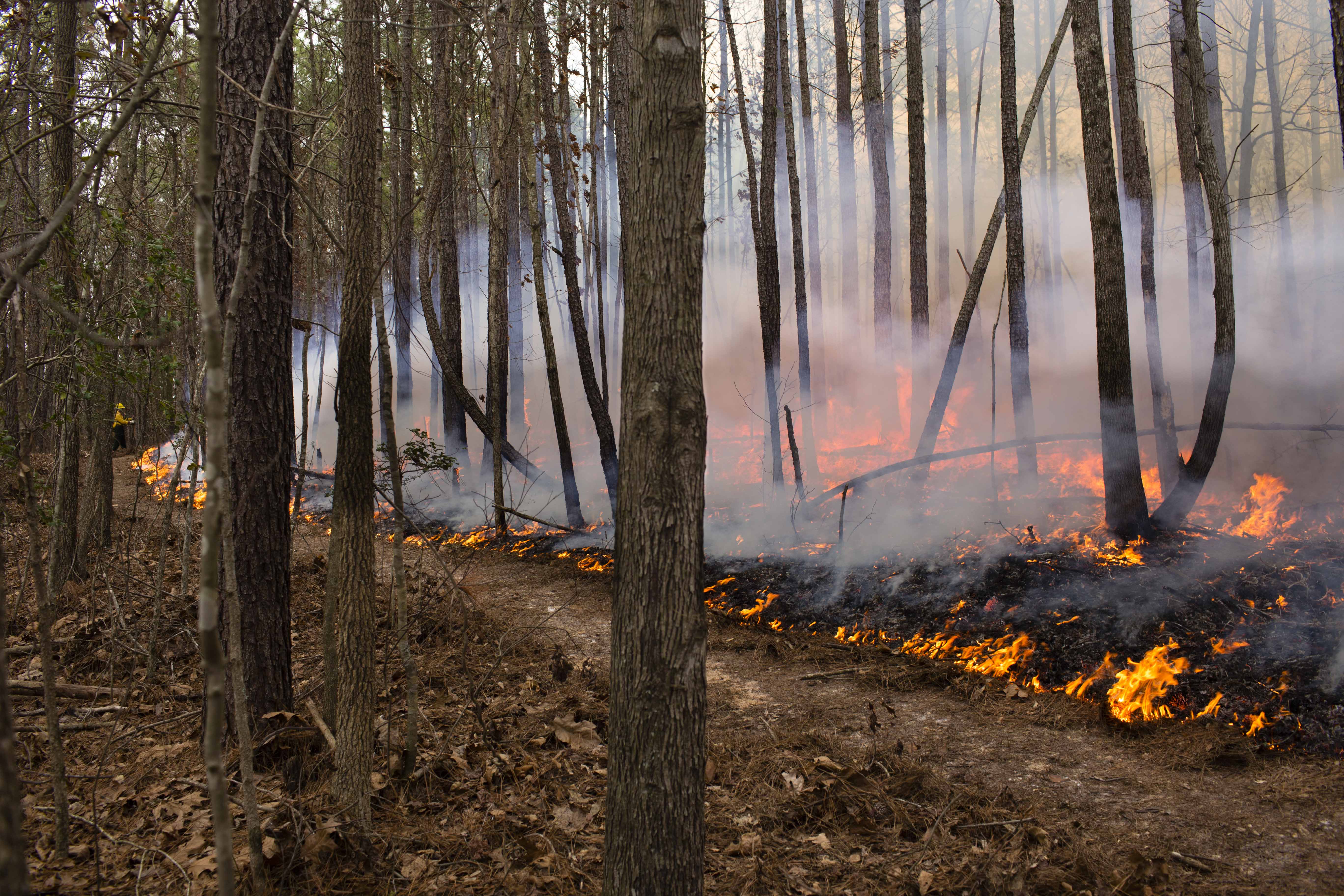By Walt Tysinger
The first signs of a gentle northwest wind rolls across the tawny grass as forecasted, sending downy seeds floating into the cool morning air. The Burn Boss gives the order to light he southeastern edge of a large meadow at Temple Flat Rock, a TLC preserve in Wake County. Someone clad in dark green pants and bright yellow shirt begins to walk up the edge of the dirt road dripping flaming fuel onto the dry broom sedge. The grass quickly ignites and the flames slowly back into the gentle northwest breeze. While the drip torch makes its way up the road edge, several others also in the fire resistant green and yellow clothing attentively watch the fireline, tools in hand ready to quickly extinguish any attempt of escape by the newly lit fire. Establishing this fireline is the crucial part of conducting a prescribed burn and is always exciting even though we have burned this meadow a half dozen times over the past 10 years.
The backing fire continues to slowly push its way into the wind leaving behind tufts of burnt grass. Once this blackened area extends a good ways from the dirt road the Burn Boss’ voice crackles over the walkie-talkies instructing the drip torch carrier to walk directly into the wind. As she does she leaves a line of fire that begins to fan out on either side. The flames fed by the dry grass and pushed by the wind quickly grow and spread, engulfing the field in 20 foot flames. The smoke billows into the winter sky, forming a gray column rising to the southeast. Grasshoppers and birds disturbed by the crackling flames quickly flitter away out of harms reach. Even though the fire has temporarily displaced these critters they will quickly return once the flames are gone and the cycle of growth begins again this spring. In fact, it is the fire that has created their home, a meadow of warm season grass, flowering herbaceous plants and thickets of blackberry and Chickasaw plum. The meadow supports many birds, insects and other wildlife. Two hours after the first torch was lit, the 15 acre field of dry grass and plants has been reduced to a smoldering landscape. To the untrained eye this may look like devastation and destruction but to the ecologist it is a beautiful site. Nutrients have been cycled back into the soil and will feed the new plant growth that will appear in a few short weeks. The ever encroaching sweet gum and loblolly seedlings have been burned away—making room for a diversity of plants that will provide nutritious food and cover to white tail deer, turkey, bobwhite quail, meadow voles, grasshoppers, bumble bees, and a plethora of other birds, mammals, insects, reptiles and amphibians. The rejuvenating power of prescribed fire can help restore damaged and compromised landscapes to highly productive and diverse habitats.
As the burn crew cleans up, making sure the fire is extinguished, the blackened landscape begins to cool. In a few short months the only evidence that this field has been burned will be the charred remains of a few sweet gum and pine seedlings. Through prescribed burning we are establishing meadows full of native plants, improving the health and vigor of forests and reducing the danger of uncontrolled wildfires. The results of our efforts will be evident as clumps of warm season grass and native forbs sprout and grow. The grasshoppers, rabbits, and deer will be back to feed on the new lush growth and the birds will be looking for nesting sites to raise their young. If you’re lucky you will hear the bobwhite calling out its name as it weaves its way between the clumps of grass in search of seeds and insects.
A version of this article was published in the Spring 2017 issue of Conservation Connections.


